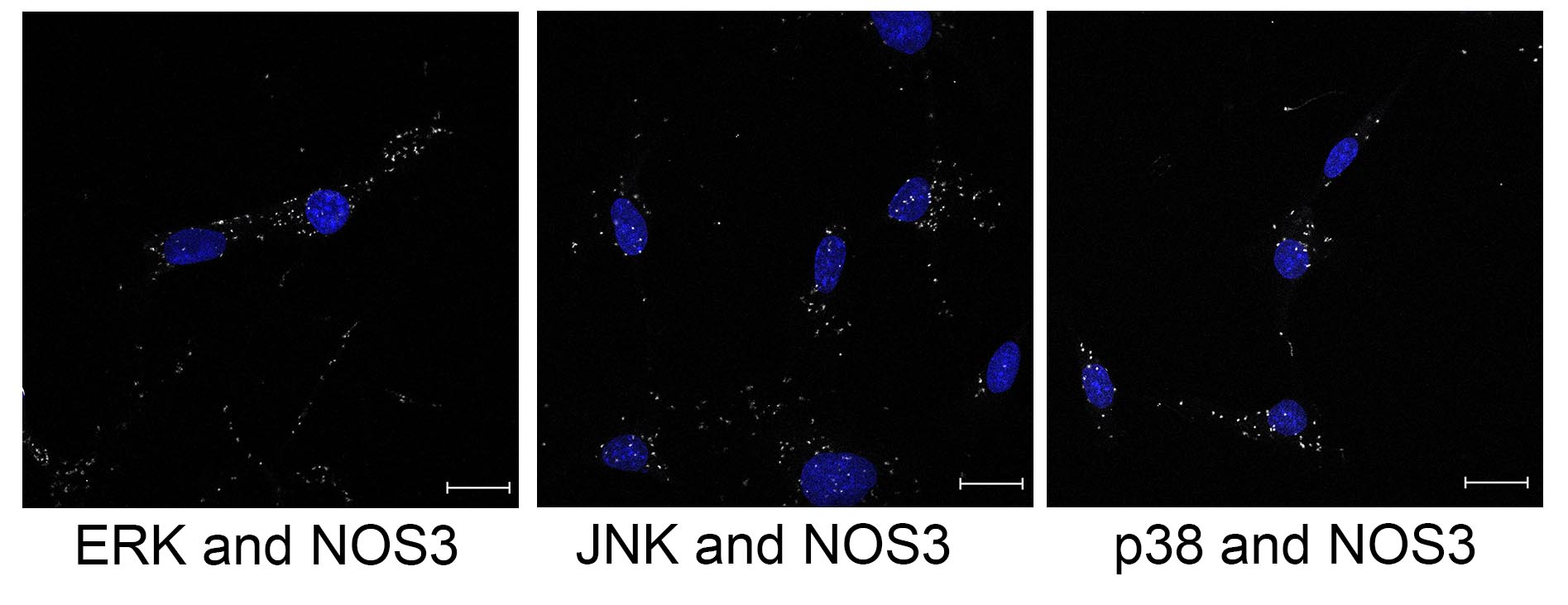Research Interests
1. The intersection of endothelial nitric oxide synthase (NOS3) and MAP kinases (MAPKs) -
Mitogen activated protein kinases (MAPKs) and nitric oxide synthases (NOSs) are critical enzymes in key signaling pathways, alterations to which impact diseases like atherosclerosis, diabetes, and cancer. MAPKs are ubiquitously expressed, very near the end of their signaling cascades and bind to nitric oxide synthase 3 (NOS3). NOS3 is a key regulator of vascular homeostasis and responds to a wide variety of signals (e.g., bradykinin, VEGF, insulin) by producing nitric oxide (NO), itself an important signaling molecule. The outcomes of MAPK interactions with NOS3 are still mysterious, and we are working to better understand how these two signaling pathways interact. Figure below shows human microvascular endothelial cell interactions of NOS3 with all three MAP kinase family members (white dots).

2. Discovering the importance of a novel phosphorylation site on NOS3 (S600) -
Our work has shown that S600 is a phosphorylated residue on NOS3 in the highly regulated autoinhibitory loop. Phosphorylation of this residue is poorly understood and we are trying to understand if this modification impacts NOS3 function.
3. Regulation and function of the MAPKAP kinases - including MKNKs
We utilize many methods to better understand the regulation of MAPKAP kinases. Recently we investigated the potential role of RSKs in NOS3 regulation. RSK2 is capable of phosphorylating NOS3 in vitro, but in our hands phosphorylation of NOS3 by RSKs in human dermal microvascular cells was not detectable after treatments that activated RSKs. We are now working on expressing various splice variants of the MKNKs and asking questions about how these enzymes are regulated.









